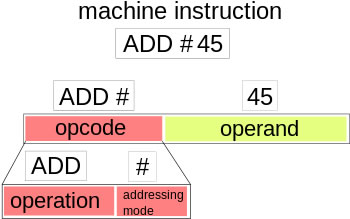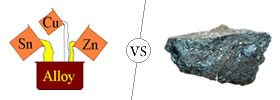Difference between Opcode and Bytecode
Key Difference: Opcode is a type of machine language instruction. It provides the computer with instructions indicating what to do with the data provided. Byte code is similar to opcode in nature, as it also tells the machine what to do. However, bytecode is not designed to be executed by the processor directly, but rather by a software based interpreter like Java or CLR.
 Opcode is short for operation code. As its name suggests, the opcode is a type of code that tells the machine what to do, i.e. what operation to perform. Opcode is a type of machine language instruction. It provides the computer with instructions indicating what to do with the data provided. In addition to the opcode, it also provides the machine with operands, which is basically the data with which the instruction must be followed.
Opcode is short for operation code. As its name suggests, the opcode is a type of code that tells the machine what to do, i.e. what operation to perform. Opcode is a type of machine language instruction. It provides the computer with instructions indicating what to do with the data provided. In addition to the opcode, it also provides the machine with operands, which is basically the data with which the instruction must be followed.
Based on what architecture is being used, the operands may be register values, values in the stack, other memory values, I/O ports, etc., specified and accessed using more or less complex addressing modes. While, the operations can be arithmetics, such as add or subtract, data copying, logical operations, and program control, as well as special instructions, such as CPUID or others.
Byte code is similar to opcode in nature, as it also tells the machine what to do. However, bytecode is not designed to be executed by the processor directly, but rather by another program. It is most commonly used by a software based interpreter like Java or CLR. They convert each generalized machine instruction into a specific machine instruction or instructions so that the computer's processor will understand. In fact, the name bytecode comes from instruction sets that have one-byte opcodes followed by optional parameters.
Bytecodes are commonly compact numeric codes, constants, and references. In fact, they are normally numeric addresses. They encode the result of parsing and semantic analysis of things like type, scope, and nesting depths of program objects. Hence, they often allow much better performance than direct interpretation of source code. They also allow the same code to run on different platforms. This in turn reduces hardware and operating system dependence.
 Bytecodes can either be directly executed on a virtual machine such as an interpreter, or it may be further compiled into machine code for better performance. The benefit of bytecodes is that it can be compiled on any machine and can then be executed by a virtual machine.
Bytecodes can either be directly executed on a virtual machine such as an interpreter, or it may be further compiled into machine code for better performance. The benefit of bytecodes is that it can be compiled on any machine and can then be executed by a virtual machine.
The confusion between Opcode and Bytecode arises from the fact that opcodes can also be found in byte codes and other representations. These representations are often intended for a software interpreter rather than a hardware device. They also employ slightly higher-level data types and operations than most hardware counterparts. However, they are constructed in similar manners.
Comparison between Opcode and Bytecode:
|
|
Opcode |
Bytecode |
|
Type of |
Machine Language Instruction |
Machine Language Instruction |
|
Description |
Is a type of code that provides the computer with instructions indicating what to do with the data provided. |
Is a form of instruction set designed for efficient execution by a software interpreter. |
|
What it does |
Instructions for operations on data |
Instructions indicating what to do |
|
Run in |
Run by the machine |
Run in a virtual machine |
|
Used by |
Hardware |
Software based interpreter like Java or CLR. |
Image Courtesy: en.wikibooks.org, slideshare.net









Add new comment